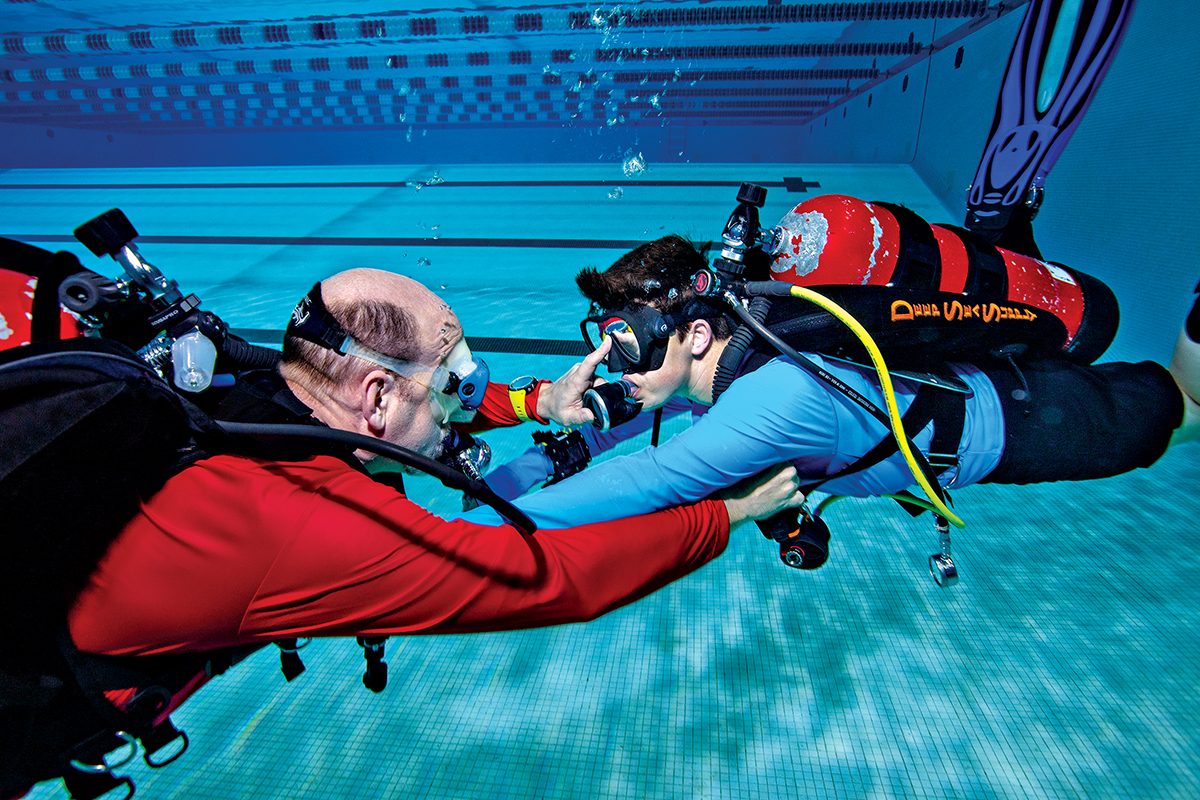Air Hoses: A Closer Look
Air hose malfunction can be a very serious safety concern. From yellow “crystals” to degraded linings, air hoses are essential pieces of equipment. Learn more about air hoses.

Air hose malfunction can be a very serious safety concern. From yellow “crystals” to degraded linings, air hoses are essential pieces of equipment. Learn more about air hoses.

THE DIVE INDUSTRY IS FULL OF DEBATES. Should you use a jacket-style, back-inflate, or backplate and wing buoyancy compensator? A canister light or a cordless light? A weight belt or integrated weights? Regular fins or split fins?

WHEN ASKED TO DESCRIBE THEIR FAVORITE COURSE, many divers will discuss the challenges and triumphs they experienced during their rescue class. Instructors often describe rescue as the most rewarding course […]

Interest in breath-hold diving, also known as freediving, has grown exponentially over the past decade. Most individuals who enjoy watersports have held their breath underwater at some point, but most do so without formal training or awareness of the known dangers despite the ready availability of this lifesaving information.

A TOPIC THAT COMES UP FREQUENTLY when discussing dive safety is the use of earplugs. Are they safe to use while diving? Does DAN have any recommendations?

MINORS HAVE BEEN DIVING FOR DECADES, but the incidence of scuba diving injuries among them remains poorly studied. As opposed to most other outdoor recreational activities, the main challenge while […]

Recommendations created by several safety-oriented organizations want to ensure that scuba remains a safe sport. Read their six recommendations.

THE RAPID GROWTH OF FREEDIVING in the U.S. brings a positive light to a sport that is mentally healthy and physically inspiring but has little tolerance for error. Shallow-water blackout […]

Scuba diving demands not only physical fitness but also proper nutritional preparation. Like with any activity, we expend energy while diving; surprisingly, the energy required for routine recreational diving is somewhat moderate. Under unusually strenuous recreational conditions, however, it’s possible to burn more than 500 calories.

Lionfish are fascinating and beautiful creatures, but they can cause serious injuries as well as environmental problems outside their normal range.
